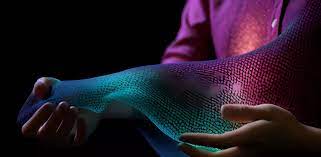Gone are the times whenever we applied garments just for security or to boost our appearance. With technology advancing at an amazing pace, we now have smart fabrics that could do far more than what conventional materials actually could. Smart fabrics are textiles that can handle getting together with the environment, receiving and transmitting data, and performing jobs that traditional materials cannot. From activities to fashion, these fabrics are revolutionizing just how we gown and live. Let’s discover the interesting world of smart fabrics and their potential applications.
Components Used for Smart Fabrics :
Smart fabrics are produced from various materials and products, including conductive and non-conductive components, organic and synthetic materials, and micro-electronic components. Conductive components such as copper, carbon, and silver play an essential position in sending signs through the fabric. Non-conductive resources like polyester and plastic offer the necessary freedom that smart fabrics require. The introduction of micro-electronics encourages smooth conversation between units and textiles, leading to improved functionality.
Purposes of Smart Fabrics :
The rise of smart fabrics has led to innovative purposes across different industries, a number of such as sports, military, medical, and fashion. In the sports market, players wear clever clothing that could tell them about their heart charges, body temperature and monitor their movements. Smart fabrics are also significantly being used in the healthcare industry, where they support monitor patients’ essential signs from a range, promote therapeutic and control chronic conditions. In the military, smart fabrics may detect compound and organic threats, check soldiers’ crucial signals and give security against injury. In the style industry, smart fabrics provide interesting style possibilities, including garments that change color or shape based on the wearer’s human anatomy temperature.
Potential of Smart Fabrics :
Smart fabrics have a brilliant future, with several exciting developments in the pipeline. Self-healing cloth is a location of extensive study, where materials have the capacity to restoration themselves when damaged. Smart fabrics may also be being made to conform to changing temperature conditions. A group of researchers at the College of Colorado produced a textile material that can change its width and thermal insulation in reaction to the environment’s temperature. The capability to integrate smart fabrics with the internet of points (IoT) is still another interesting progress, where clothes will communicate with different products and perform independently. Such inventions could make smart fabrics a lot more adaptable and crucial within our day-to-day lives.
Sustainability of Smart Fabrics :
As the potential of tech startups is huge, it is important to think about the environmental affect of the production. The integration of electric parts in textiles involves power and sources that may not be sustainable. To counteract this dilemma, analysts are discovering the utilization of eco-friendly products and integrating sustainability in to the look of clever fabrics. Companies will also be recycling digital spend to generate new smart materials. By considering the environmental effects of intelligent material creation, the industry can grow responsibly and contribute to a cleaner future.
small:
Smart fabrics have performed a significant position in transforming the textile market, with many modern programs across different industries. As technology innovations, intelligent fabrics’ possible purposes are endless, and the integration of sustainability improves the sector’s growth. Once we explore the planet of smart fabrics , it’s clear these textiles aren’t just useful but additionally lovely, with exciting design options. As we move ahead, it is very important to carry on research in to the potential of smart fabrics and accept this exciting sector’s sustainability.



